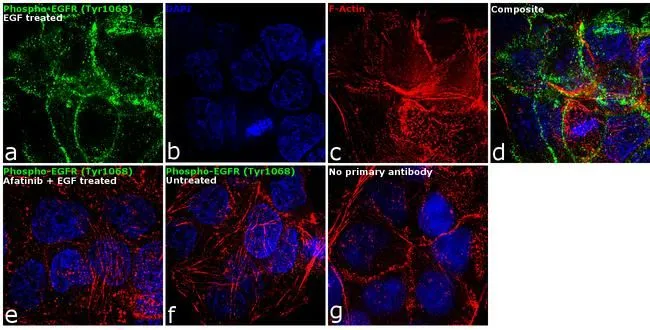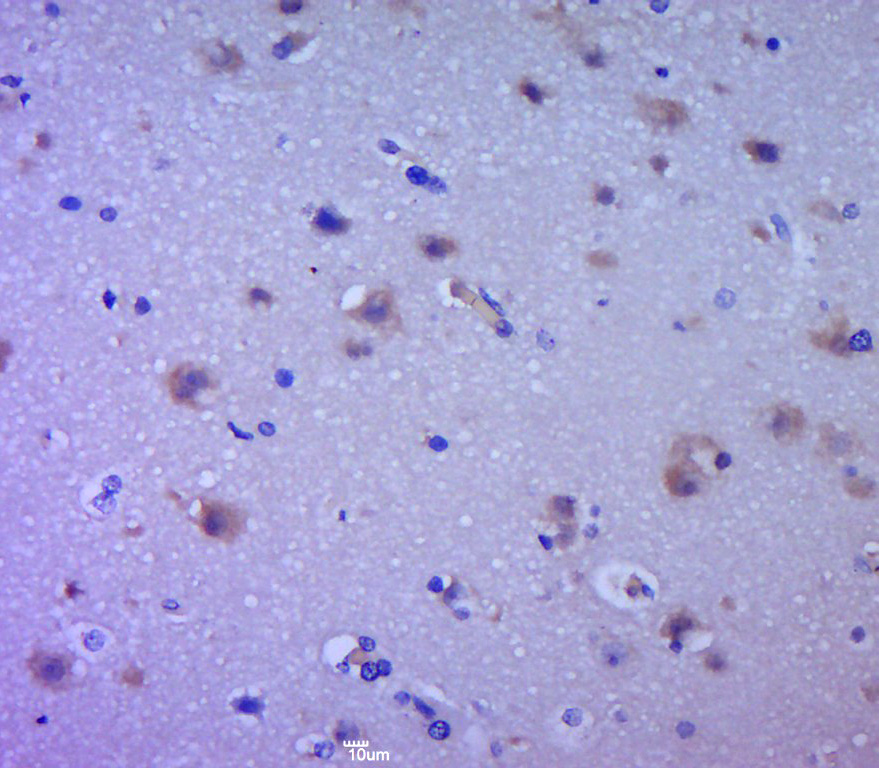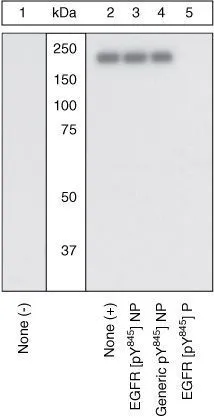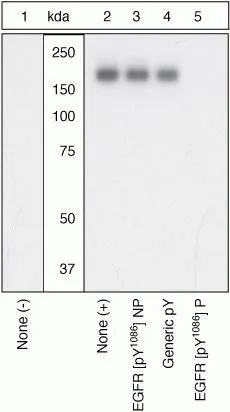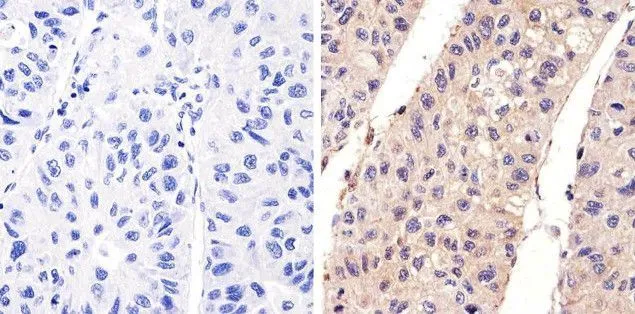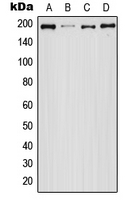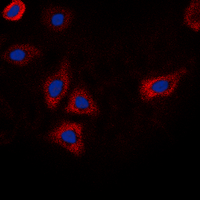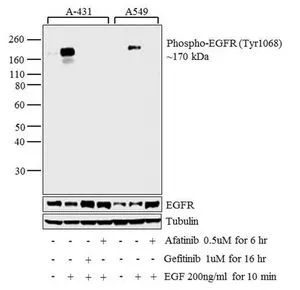
WB analysis of membrane enriched extracts (30 ug lysate) of A431 (Lane 1) treated with EGF (200ng/ml for 10 minutes) (Lane 2), A431 treated with Gefitinib followed by EGF (1uM for 16 hours, 200ng/ml for 10 minutes) (Lane 3), A431 treated with Afatinib followed by EGF (0.5 uM for 6 hours, 200ng/ml for 10 minutes) (Lane 4), A549 (Lane 5) treated with EGF (200ng/ml for 10 minutes) (Lane 6), and A549 treated with Afatinib followed by EGF (0.5 uM for 6 hours, 200ng/ml for 10 minutes) (Lane 7) using GTX25644 EGFR (phospho Tyr1068) antibody. Dilution : 1:1000
EGFR (phospho Tyr1068) antibody
GTX25644
ApplicationsImmunoFluorescence, Western Blot, ImmunoCytoChemistry, ImmunoHistoChemistry
Product group Antibodies
TargetEGFR
Overview
- SupplierGeneTex
- Product NameEGFR (phospho Tyr1068) antibody - Orthogonal Validated
- Delivery Days Customer9
- Application Supplier NoteWB: 1:1,000. ICC/IF: 1:100. *Optimal dilutions/concentrations should be determined by the researcher.Not tested in other applications.
- ApplicationsImmunoFluorescence, Western Blot, ImmunoCytoChemistry, ImmunoHistoChemistry
- CertificationResearch Use Only
- ClonalityPolyclonal
- ConjugateUnconjugated
- Gene ID1956
- Target nameEGFR
- Target descriptionepidermal growth factor receptor
- Target synonymsavian erythroblastic leukemia viral (v-erb-b) oncogene homolog; cell growth inhibiting protein 40; cell proliferation-inducing protein 61; epidermal growth factor receptor; epidermal growth factor receptor tyrosine kinase domain; ERBB; ERBB1; erb-b2 receptor tyrosine kinase 1; ERRP; HER1; mENA; NISBD2; PIG61; proto-oncogene c-ErbB-1; receptor tyrosine-protein kinase erbB-1
- HostRabbit
- IsotypeIgG
- Protein IDP00533
- Protein NameEpidermal growth factor receptor
- Scientific DescriptionThe protein encoded by this gene is a transmembrane glycoprotein that is a member of the protein kinase superfamily. This protein is a receptor for members of the epidermal growth factor family. EGFR is a cell surface protein that binds to epidermal growth factor. Binding of the protein to a ligand induces receptor dimerization and tyrosine autophosphorylation and leads to cell proliferation. Mutations in this gene are associated with lung cancer. [provided by RefSeq, Jun 2016]
- Storage Instruction-20°C or -80°C,2°C to 8°C
- UNSPSC12352203

